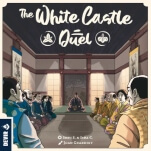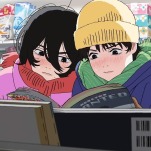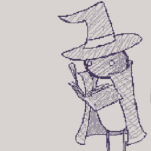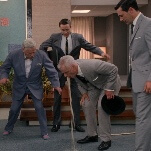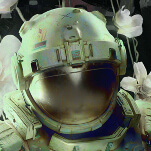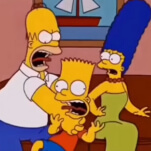They’ll need as much of it as they can get. A rebellion engulfing the heart of London, coupled with a troubling epidemic of lycanthropy, doesn’t give the group much time for heraldic grab-ass. Your character, Gray (a.k.a. Galahad, a.k.a. Sir Sideburns), is a respected elder knight who, in the game’s early missions, is often teaching what he knows about eviscerating the proletarian rebellion—and blasting gaping holes into werewolves—to Lady Igraine and the Marquis De Lafayette. Near-immortal crusaders, a class conflict that defined the era, and the racial imbroglio with werewolves that didn’t: It’s a delicious recipe that makes for an intriguing alternate London, which is rendered so sharply that it’s hard to not be captivated by this tubercular Victorian wonderland. It’s maddening, then, that The Order doesn’t even give us the chance to interact with what little substance is inside its alluring jewel-encrusted chalice.
Chapter to chapter, Sir Galahad moves along his predetermined homicidal path with a small arsenal of rifles, shotguns, lightning guns, and other sundry incendiaries. He murders a fairly large contingent of guards for no better reason than the higher-ups might be involved in some nefarious plot. These guys are just trying to earn an honest paycheck, but if thousands of them need to die for this knight to get some answers, then so be it. Sir Galahad’s methods resemble nothing so much as John Cleese’s homicidal run through the castle, slaughtering an entire wedding party to save a “damsel” in distress. Except the damsel here is rampant imperialism and a faltering system of repressive government.
But you can’t rule Britannia without breaking a few eggs or lacerating a few esophagi. Sneaking up on a sniper, sticking him with your knife, taking his rifle, stepping over his still-warm corpse, and picking off the guys who have your buddy pinned down is just as satisfying as it ever was in other shooters of this ilk. Likewise, if you blast someone at close range with a three-barreled shotgun, they explode in a pleasingly horrifying way. When things get more intimate, the fights more closely resemble action sequences from a Telltale game, with helpful button prompts flashed onto the screen at opportune moments in the fight. It sort of takes the fun out of interspecies mortal combat, but it’s perfectly in line with the game’s insistence on always telling you exactly what to do, and when to do it.
Its lack of trust in the player is best expressed in the The Order’s dramatic final scene (no plot details ahead). As Galahad holds his antagonist’s life in his hands, the player is prompted to pull the trigger. If you don’t want to play the executioner, the knight is doomed to stand there for all eternity, awkwardly pointing an oversized hand cannon at his prone opponent. And while putting off the grisly decision would indefinitely extend the game, it wouldn’t do much to alleviate The Order’s biggest problem, which is not its short runtime. No, the larger issue is this: Most of the time, The Order barely allows you to play in any meaningful sense. The parts where you aren’t killing indiscriminately amount to little more than pushing a button to move on to the next charnel obstacle course. And while this doesn’t make it any worse than hundreds of other similar shooters, it’s particularly disappointing here, because The Order has the potential to be something more.
The Order: 1886Developer: Ready At Dawn, Sony Santa Monica Studio
Publisher: Sony Computer Entertainment
Platform: PlayStation 4
Price: $60



